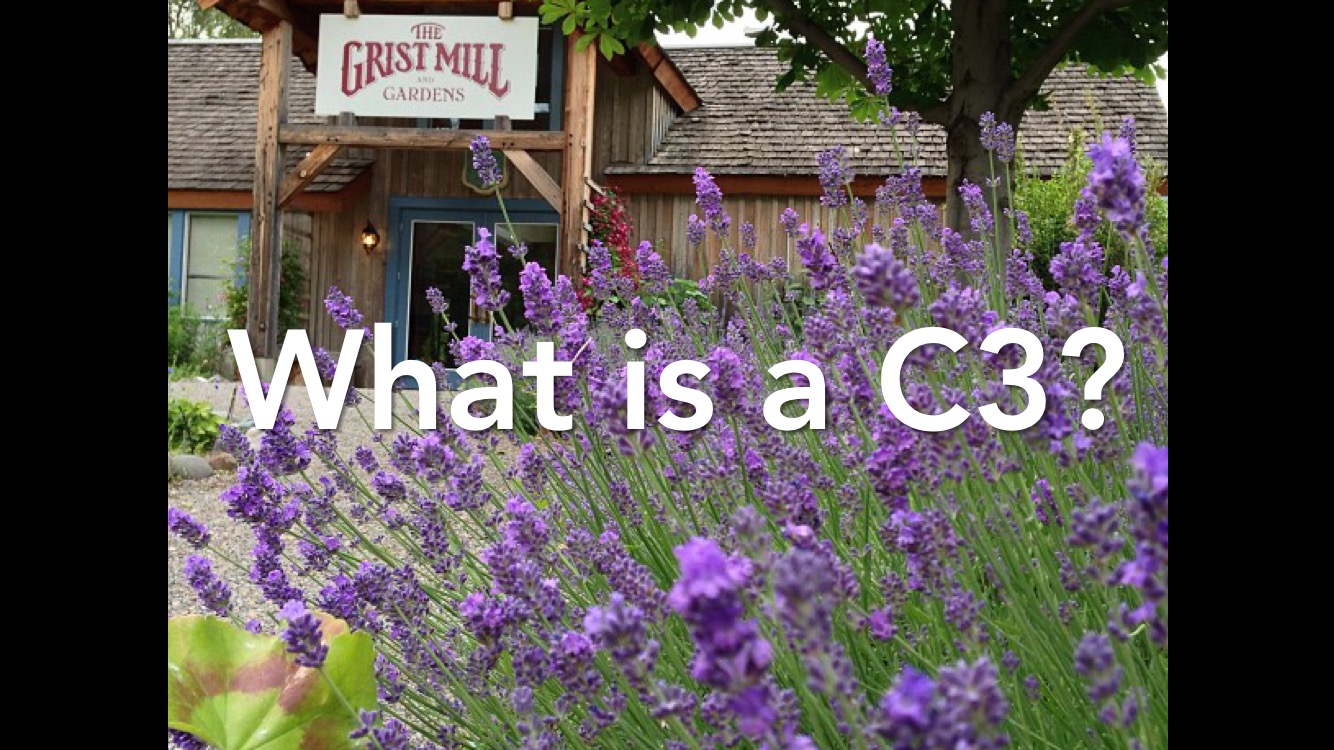Beginning in April 2017, a new company is taking over operation of the Grist Mill and Gardens Historic Site. The details are pretty technical, but we believe that our new corporate structure, combined with a now-granted ten year lease on the site with the Province of BC will allow for more stability than this exceptional piece of BC history has seen in more than a decade.
This new company, Grist Mill CCC, has the same ownership and key staff as the previous operator, Mathieson Heritage Services, but there are many changes “under the hood”. Most importantly, Grist Mill CCC is a new kind of company called a Community Contribution Corporation (or C3).

A C3 is for-profit company that is restricted–by law–in many of same ways non-profits and charities are and, most importantly, provides a real benefit to its community. It is a very specific kind of incorporation intended specifically for social enterprise.
What features make a C3 unique?

Like any other business, C3s are incorporated under the BC Business Corporations Act. Changes were made to that Act in 2012 and this form of corporate structure was made available to register in 2013. By 2015, there were almost thirty C3s incorporated in BC. Grist Mill CCC was the thirty-fifth.
Like all C3s, we are required to have a community purpose written into our Articles of Incorporation, ensuring it is a fundamental part of the company. The community purpose for our Grist Mill CCC is as follows:
Community Purpose
This company exists to undertake sustainable and community-minded commercial activity in support of the preservation, rehabilitation and public access to the heritage represented at the Grist Mill and Gardens historic site. Further, this company recognizes the important role the site plays in the community, doing the following:
- Supporting the development of a strong and integrated local economy
- Supporting other socially-minded organizations in their own community purposes
- Providing arts, culture and educational opportunities.

How do C3s differ from a typical private company?
One obvious difference is that the company must have “Community Contribution Corporation” or “CCC” in it’s name, but the big difference is that C3s are subject to an “asset lock,” meaning there’s strict rules on how profits and assets can be handled–the bulk of a C3’s profits must go towards the C3’s community purposes (or be transferred to a qualified entity, such as a charity). The other major difference is that C3s are subject to a higher degree of accountability – for example, they must have three directors, instead of just one, and are required to publish an annual “community contribution” report describing their activities. Both of these requirements are intended to help ensure the community purposes of the C3 are being properly fulfilled.

The next question seems obvious: Why choose a business model so full of restrictions, without the benefits that come with being a non-profit or a registered charity?
Everyone who establishes a C3 has their own reasons, but here are ours…

Since our team took over operation of the site in 2013, the community has been very clear about the sort of role the Grist Mill can and should play in their community; including a statement of community benefit makes it clear that we respect those values and wish to be held accountable for them. We’d spent the previous three years building strong relationships with a wide variety of stakeholders in the community and wanted to sustain, and leverage, that social capital for the ongoing benefit of the site and the community.
Early during this process to secure a long-term lease, we considered the possibility of dissolving our own business so that we could work with a local non-profit to help them secure the lease, figuring that might provide the ultimate community benefit. Unfortunately, there was no volunteer-led group with adequate capacity to govern and operate a complex site such as this.
No matter the structure, it was clear that the provincial government wanted to see its own role reduced on the site and so seemed prepared to consider a wider variety of business activities here, possibly even ones that might not be preferred by the community. Creating a C3 and securing a long term lease does much to ensure that the core heritage of the site is respected and that it will continue to be operated as a community amenity and historic attraction.
Next Steps
The 2017 season will be the first one for Grist Mill CCC and we will be hosting several stakeholder engagement events through the year as we plan out our next decade of operation on the site. We also particularly look forward to preparing and publishing our first community contribution report in about a year to detail the ways in which we’ve met our community objectives. Hopefully, we can publish less formal updates on the rewards and challenges associated with this fascinating new business model and its suitability for managing community facilities like ours.
If you would be interested in contributing your perspectives or expertise as we explore the possibilities of the Community Contribution Corporation model, please get in touch with us at chris@oldgristmill.ca anytime. We’re also always looking for volunteers to lend a hand on our day-to-day operation of this exceptional piece of BC heritage.
Come join us!
